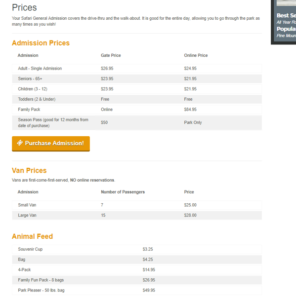F.W. Thorpe: A Good Business Making Durable Products that May Have Already Peaked
Today’s initial interest post is a company I like a lot. It’s trading at a price that could be justifiable – possibly – based on that company’s past performance. But, it’s not a stock I’m going to give a very high initial interest level too. The reason for that is uncertainty about the future.
I’ll get to that uncertainty in a second. First, I want to describe what FW Thorpe does. The company makes lights. I won’t go into too much detail here. You can always read a company’s annual report for yourself. So, I hate to go into analysis free re-hashes of a company’s basic business model. I’ll do that a little here, though, because I don’t want you to think FW Thorpe makes light bulbs for your house.
The company’s focus in on professional lighting with the lowest cost of total ownership. It makes lights for everything from clean rooms to warehouses to retail shops. FW Thorpe’s products are used for street lights, in tunnels, up on the ceiling of the office you may be working in now (though, if you’re not in the U.K. or the Netherlands – it’s a lot less likely that’s an FW Thorpe product). The company also makes lighting for emergency signs. It has a business unit that seems to me to be focused on making emergency sign lighting that complies with regulations while looking aesthetically pleasing (the customers all seem like locations that care about the look of the interior of their building). Some lighting is used to illuminate advertisements and things like that. It’s a whole variety of professional lighting where the main focus is not having the cheapest initial purchase price. It’s about what the lighting does and how little it’ll cost you in electricity bills, replacement, etc. over many years into the future.
Basically: FW Thorpe makes lights. Decades ago, lighting was not a very durable product. But, that changed in recent years. Unfortunately, not so recent that we’re still in the middle of this shift from more disposal lighting to more durable lighting. What was once often fluorescent (and incandescent) lighting became LED. As you probably know, a lot of governments put in rules phasing out incandescent lighting. Many of these rules were put in place anywhere from 5-15 years ago. So, again – we’re talking about a tailwind that was stronger in the past than it will be in the future.
I’m sure there are people reading this who know more about the lifespans of incandescent, fluorescent, and LED lights. But, from what checks I could make – it seems that a typical LED light can have a life as much as 10 times that of a typical fluorescent lamp. I was, however, able to find references to some fluorescent lamps designed to have similar lifespans to LED lights. So, companies have probably always been working on extending the lifespan of any of these types of lighting. For us as investors here – the problem is that …
Read more




